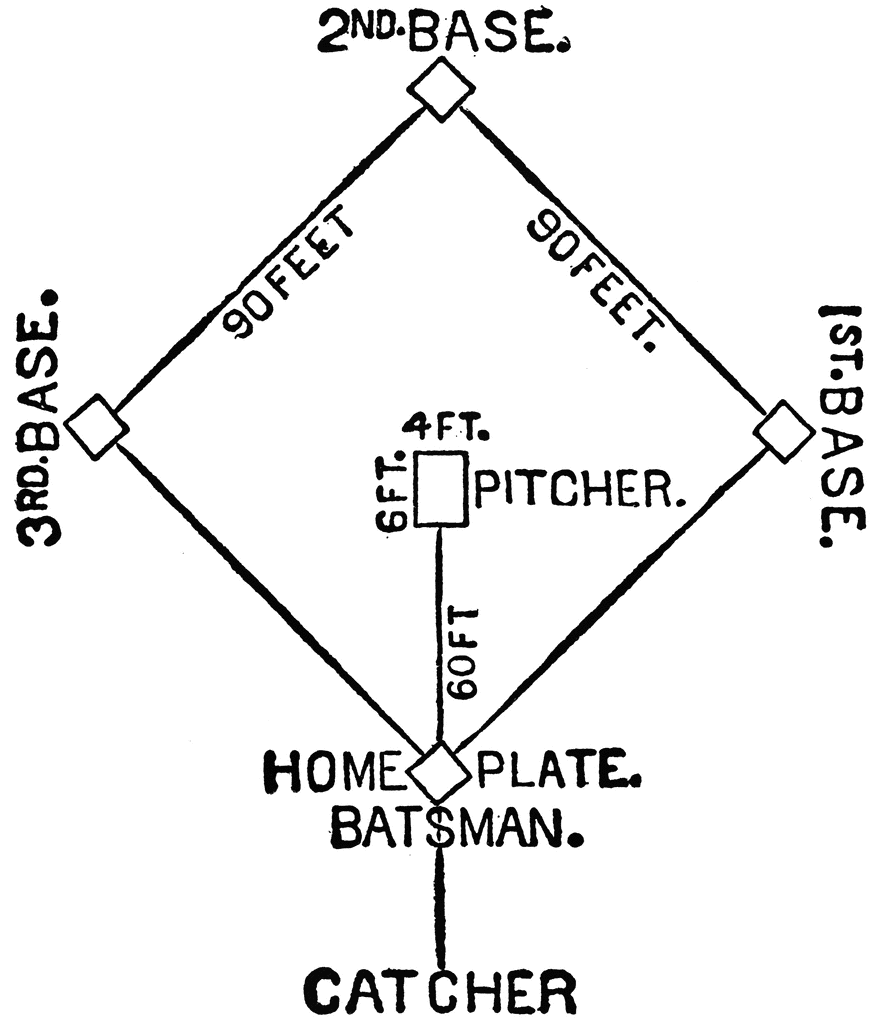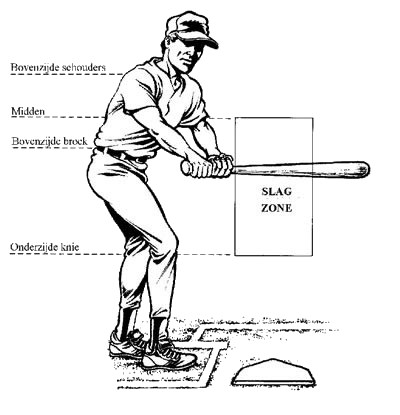90 feet ← the perfect distance →

De afstand tussen de honken in professioneel honkbal is 90 voet (27,43 meter).
Deze afstand is perfect gebleken voor het creëren van spanning op de honkpaden. Het begint allemaal op het eerste honk, waar er evenveel close als routine plays zijn. Een snelle honkloper heeft een kans om het eerste honk te bereiken na veel grounders, vooral degenen die niet recht naar de infielders worden geslagen of waarvoor lange worpen nodig zijn. Maar zelfs dan kan een uitmuntend veldspel de loper vaak te pakken krijgen, zelfs met de kleinste marges. Het infield is daarom in staat om uitmuntende inspanningen van zowel lopers als veldspelers in bijna gelijke mate te belonen, waardoor het een geometrisch wonder is.
Bovendien is de afstand tussen de thuisplaat en het tweede honk, gecreëerd door de "diamond", die eigenlijk een vierkant is, ook ideaal om veel drama te creëren bij steelpogingen. Zelfs met een voorsprong op het eerste honk hebben lopers het moeilijk om de worp van ongeveer 127 voet (ongeveer 38,8 meter) te verslaan.
Het is onduidelijk hoe het honkbal tot de afstand van 90 voet is gekomen. Het is waarschijnlijk ontstaan in de 19e eeuw, toen het spel nog niet goed georganiseerd was en informeel gespeeld werd op velden waar verschillende bestaande objecten vaak als honken dienden, wat betekende dat het veld niet echt vierkant was.
Een overblijfsel van die vroege onregelmatig gevormde dagen leeft natuurlijk voort tot op de dag van vandaag, maar dan in inconsistente afmetingen van het buitenveld.
Afmetingen
Werpheuvel
-
In het professionele honkbal is de afstand tussen de werpheuvel en de thuisplaat 60 voet en 6 inch (18,44 meter). De werpheuvel heeft een ronde vorm met een diameter van 18 voet (5,49 meter) en een hoogte van 10 inch (25,4 centimeter).
Slagzone
 De slagzone verwijst naar het gebied boven de thuisplaat die 17 inch (43,18 centimeter) in de breedte meet. In hoogte is de slagzone begrensd door het midden van het bovenlijf (midden van bovenzijde broek en bovenzijde schouders) en oksels van de slagman wanneer ze hun natuurlijke houding aannemen. De slagzone varieert per slagman, afhankelijk van hun lengte en houding.
De slagzone verwijst naar het gebied boven de thuisplaat die 17 inch (43,18 centimeter) in de breedte meet. In hoogte is de slagzone begrensd door het midden van het bovenlijf (midden van bovenzijde broek en bovenzijde schouders) en oksels van de slagman wanneer ze hun natuurlijke houding aannemen. De slagzone varieert per slagman, afhankelijk van hun lengte en houding.Buitenveld
-
Hoewel de primaire focus op het binnenveld ligt, spelen de afmetingen van het buitenveld ook een cruciale rol in honkbal. De afmetingen van het buitenveld kunnen variëren afhankelijk van het honkbalstadion, maar ze variëren meestal van 325 voet (99,06 meter) en 450 voet (137,16 meter) van de thuisplaat tot aan de omheining van het buitenveld.
Websites
Uit persoonlijke interesse ben ik begonnen met het maken van een website in Microsoft Frontpage. Veel later, nadat ik Joomla een tijdje had uitgeprobeerd, kwam ik uiteindelijk uit bij WordPress.
Sindsdien heb ik een aantal websites ontworpen in WordPress voor een groep vrienden, honkbalclubs, een hardloopschool, een lokale belangengroep en mezelf.
Dit zijn de domeinen die ik momenteel beheer:
| 90feet.nl | koffieboon.de | The--Untouchables LAN-Party | Running Skills |
